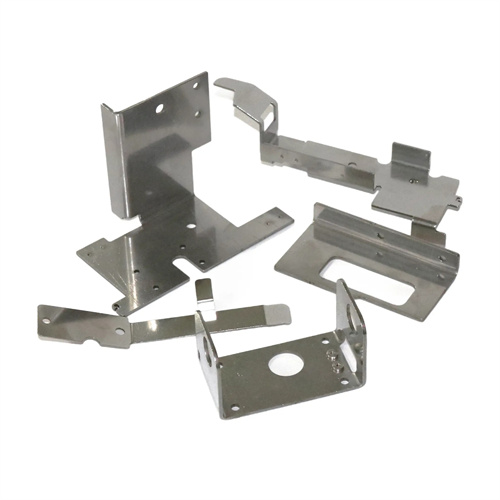Hot rolled steel for automobile wheel retaining rings and lock rings
Hot-rolled steel sections for automotive wheel retaining rings and locking rings are specialized steel materials used in their production. These special-shaped sections feature a specific grooved or hooked cross-section. They are used to secure the tire to the rim, ensuring it does not fall off during driving. They are crucial safety components for automotive wheels. Typically manufactured from carbon structural steels such as Q235 and Q345, or low-alloy high-strength steels, this type of steel boasts a tensile strength of 375-500 MPa and an elongation of ≥20%. They also possess excellent plasticity and cold-bending properties, facilitating subsequent rolling and welding processes. Compared to conventional hot-rolled sections, these require higher dimensional accuracy, with flange thickness tolerances limited to ±0.5 mm and bend angles ≤1° to ensure a precise fit with the rim.

The production process for hot-rolled steel sections used in automotive wheel retaining and locking rings centers on special-shaped pass rolling, requiring precise pass design and rolling parameter control. First, computer simulation software is used to design the multi-pass rolling pass based on the cross-sectional shape of the retaining and locking rings. This ensures uniform metal flow during rolling and avoids defects such as folding and underfilling. After heating the billet to 1150-1200°C, it enters the hot rolling mill for rough rolling, which brings the billet to a near-cross-sectional shape. During rough rolling, the reduction is controlled (15-25% per pass) to prevent cross-sectional distortion caused by uneven deformation. During the intermediate and finishing rolling stages, universal mills and specialized pass rollers are used to gradually adjust the cross-sectional size and shape of the steel section. The finishing rolling temperature is controlled at 850-900°C to ensure excellent ductility and surface quality. After rolling, the steel section is naturally cooled on a cooling bed to below 300°C before being straightened and cut to length. Finally, cross-sectional dimensional inspection and mechanical property testing are performed to ensure that the product meets standard requirements.

In the passenger car sector, hot-rolled steel sections for automotive wheel retaining rings and locking rims are primarily used for steel wheels, particularly spare wheels for economy cars and SUVs. Steel wheel retaining rings for economy cars are made from Q235 carbon structural steel, rolled and welded into a ring shape. Their cross-section typically measures 30-50mm in height and 3-5mm in thickness, meeting the strength requirements for tire fixation while keeping manufacturing costs low. Batch testing by a car manufacturer showed that retaining rings made from standard steel sections showed no noticeable deformation after 100,000 kilometers of driving. Due to the larger tire sizes of SUVs (17-19 inches), the cross-section of the hot-rolled steel sections used for their locking rims is increased, and Q345 low-alloy steel is used to enhance reliability in complex road conditions. The locking rims of a certain brand of SUV have maintained excellent elasticity and locking performance after 2,000 disassembly and assembly tests.

In the commercial and heavy-duty vehicle sectors, hot-rolled steel sections used in wheel retainers and locking rings have even higher specifications and performance requirements. Heavy-duty truck wheel retainers are designed to secure large tires (19-22.5 inches in diameter). They utilize thick-walled hot-rolled steel sections (8-12 mm thick) that undergo hot rolling and overall quenching and tempering to ensure elastic failure even under full load. Test data from a heavy-duty truck wheel manufacturer shows that high-quality retainer steel exhibits a permanent deformation of less than 0.5 mm when subjected to a radial force of 100 kN. Large passenger bus wheel locking rings, which require frequent maintenance and disassembly, utilize high-plasticity hot-rolled steel sections (elongation ≥ 25%). Through optimized cross-sectional design, the disassembly and assembly force is controlled to 300-500 N, making them easier for maintenance personnel. Construction vehicles, such as dump trucks and concrete mixer trucks, utilize weather-resistant hot-rolled steel sections with added alloying elements such as chromium and nickel to enhance corrosion resistance in harsh outdoor environments and extend their service life.

With the advancement of automotive wheel technology, the performance and production processes of hot-rolled steel sections used in wheel retaining rings and locking rings continue to improve. Steel companies have developed high-strength, low-alloy steel sections (such as Q460) that achieve a 30% increase in strength at the same thickness, enabling lightweight designs for retaining and locking rings. One wheel manufacturer, using this steel section, reduced the weight of a single retaining ring by 1.5kg, significantly reducing the weight of the entire vehicle. To meet the needs of new energy vehicles, hot-rolled steel sections with excellent weldability have been developed. By controlling the carbon equivalent (≤0.45%), the risk of weld cracks is reduced and wheel assembly efficiency is improved. In terms of production processes, continuous rolling and in-line heat treatment technologies are used to improve the dimensional accuracy and performance uniformity of the steel sections. At one steel plant, the cross-sectional tolerance of retaining ring steel sections is controlled to ±0.3mm, and the product qualification rate has increased to over 99%. In the future, with the advancement of vehicle lightweighting and electrification, hot-rolled steel sections for wheel retaining and locking rings will develop towards higher strength and more complex cross-sections, providing strong support for vehicle safety and energy conservation.
